Yeah, it was creaky and critter-inhabited, leaned to one side or the other on any given day, and the roof leaked in four major places (we had dedicated buckets for all four spots) — but the “Homestead” was OUR homestead for our first month in Belize.
Though it’s only been a few weeks since moving out of the Eldridge house and into the Forest Home house it seems like a lifetime ago. This post is a fond look back on our month in the Homestead, and all of its “rustic” charm.

Living in the Homestead was like living in your own rustic jungle bungalow every day and every night. Indeed, Lori and I have stayed in many an abode far more rustic than the Eldridge house, but it’s a bit different living long-term versus 3-5 day stints.

In many ways, I felt the Homestead gave me a chance to relive my experience as a Peace Corps volunteer, and to a certain degree that was true. Yet, even the Homestead was quite a bit more luxurious than my home for two years in Mozambique (pictured above) made mostly of reeds and mangrove stalks. It had no electricity or running water and a latrine and bathhouse outside. The Homestead in Belize, on the other hand, had indoor plumbing AND electricity, along with a number of other amenities such as beautiful hardwood floors and ceilings (high ceilings at that), large screened windows, and it was fairly spacious for the size of the house. It had a flush toilet (common in Belize, not so much in Mozambique) and a cold water shower. It even had a little indoor kitchen with a fridge!
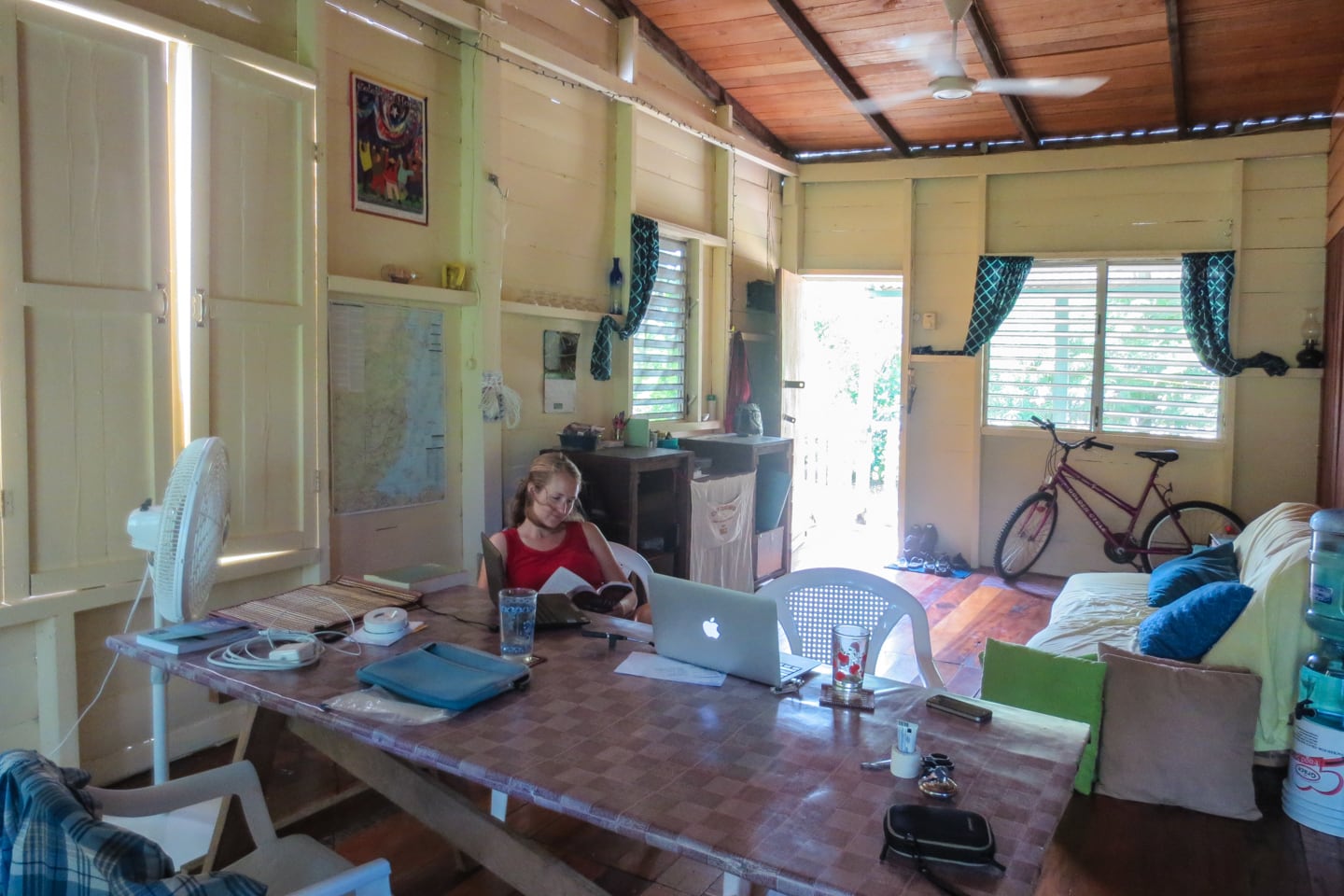
Pictured above is the dining area and front room with makeshift futon (made of a combination of old mattresses and foam pads tied together and covered). We didn’t realize it while living there, but looking at the photos now is a bit of sensory overload with a lot going on everywhere you look. The house did, however, seem to stay relatively cool throughout the day, which is important in Belize.

The best thing about the house, however, was the environment. We were on the property of our landlord — an wonderful Spanish-speaking woman along with a few of her adult children’s families — but our yard was set apart just enough for privacy, though we did have the occasional chickens and ducks running around. There was also a large pasture behind the house as well where a family of three white cows mostly grazed and chilled out. I do have to say though that you’ve never seen a cow move so quickly until you’ve seen one get caught in a roaring midday thunderstorm.

This is the kitchen, in all of its rustic country jungle glory. Well-equipped for a bungalow, but still basic by American standards I suppose. We had a medium-sized fridge, toaster oven and four-burner propane stove. We also had all of the tupperware containers and glassware we could ever hope to use. One of my favorite things about the house was waking up in the morning and going around opening up all of the windows to let the light in (there were many). The best part was opening the two small windows over the sink and seeing a cow or two peering inside to see what’s for breakfast.

We were very fortunate to have inherited a good stock of spices, though we soon found that spices aren’t nearly as difficult to get in PG as we thought they might be. Oh, and with regards to the toaster oven, it’s pretty amazing what you can cook in one! We made pizza, breads, and all sorts of other tasty dishes (in addition to doing plenty of toasting).
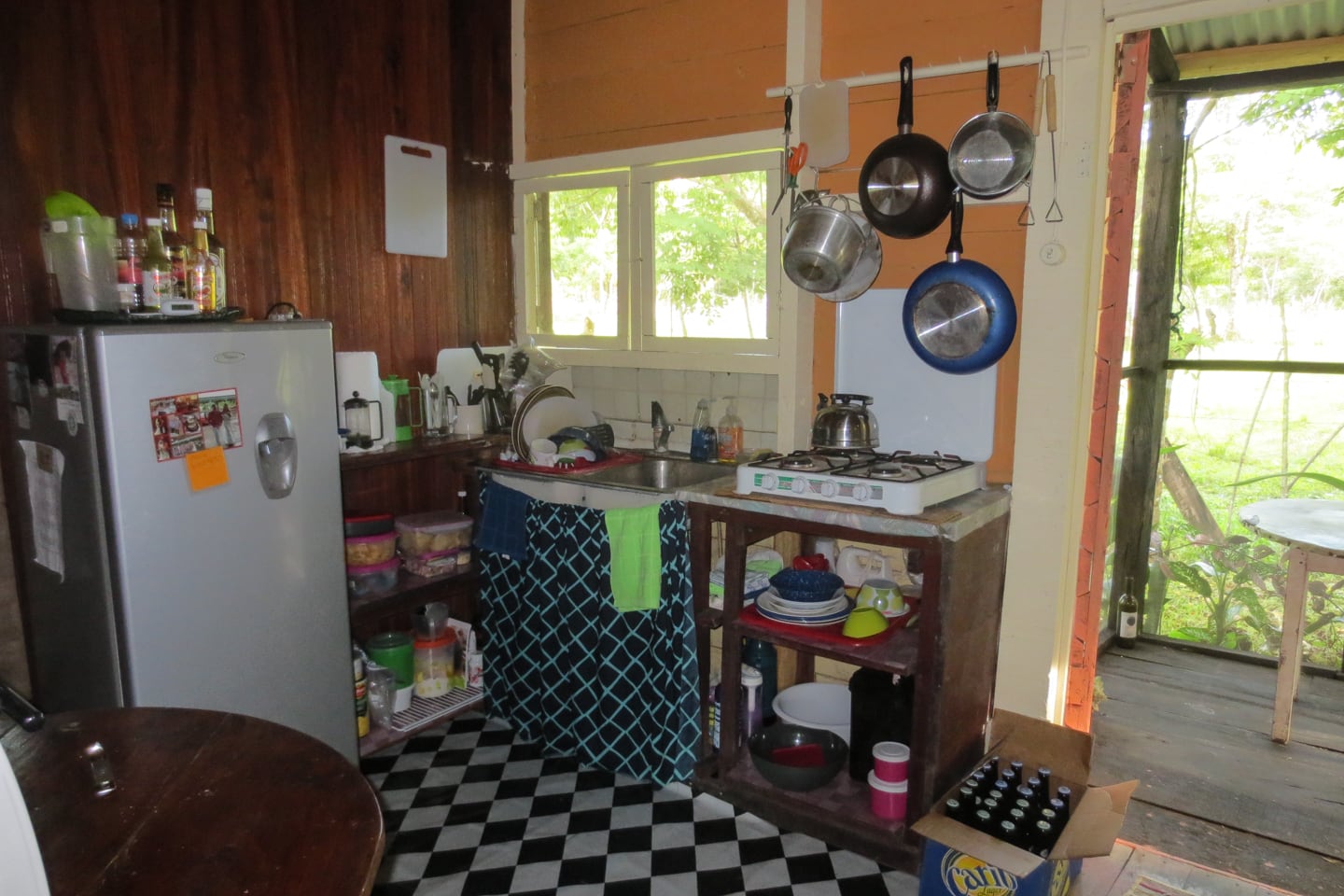
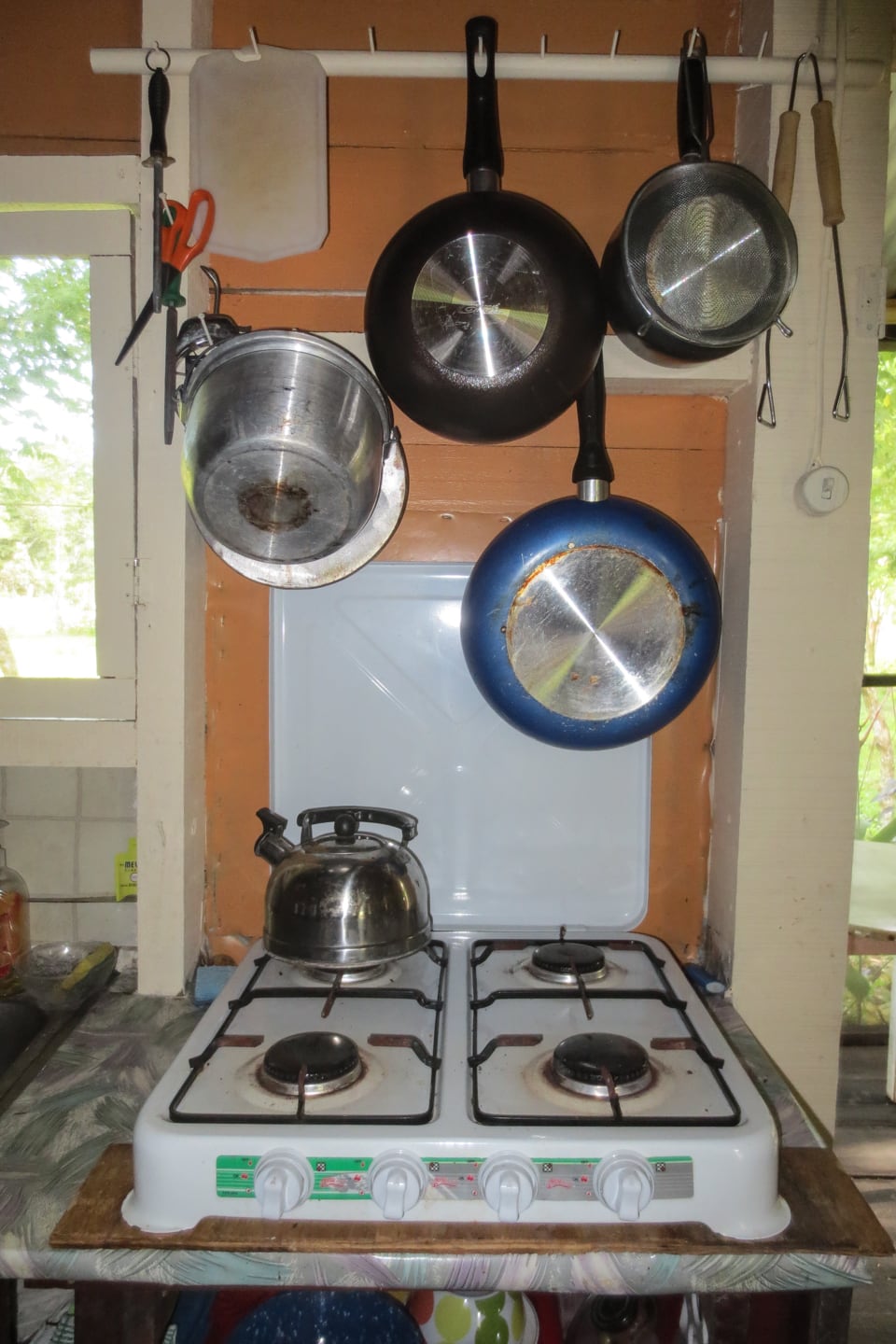

The bathroom had some interesting touches as well. For one, it was a patchwork of caulk, floor covering and tape which had been used by the previous long-term tenet (a Peace Corps volunteer) to cover up some of the gaps in the walls where daylight shone through. It also had a cool camp-shower contraption on a pulley system that allowed you to lower it, fill it with water and hoist it back up. But the coolest part was that it was lined up so that in the morning you opened a window to let direct sunlight through which heated the water in the bladder — and it worked pretty well. Only catch was that you only get the benefit in the afternoon/evening.


Another great feature of the bathroom was the spinner, the small plastic clothes washer that washes the clothes on one side and spins them at very high speed on the other. The spinner works so well in fact that about half the load emerged 90% dry after use, which is more than I can say for the spin cycle on most washers in the States.
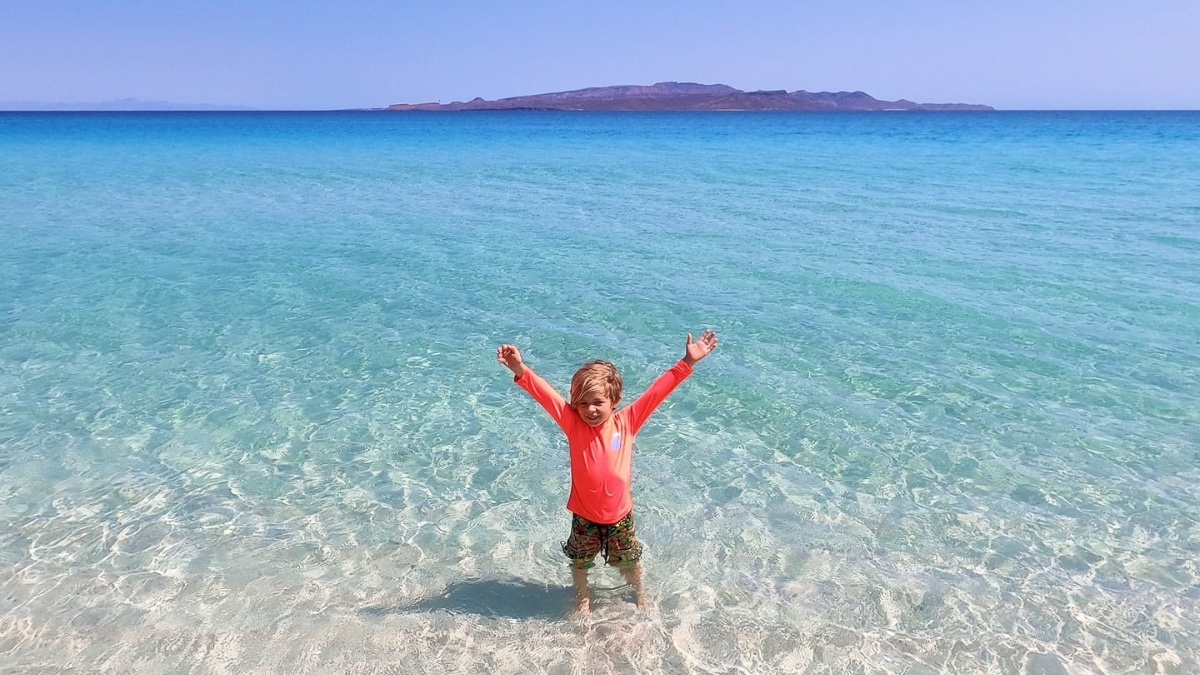

Above is the view in the shower, below our non-functioning shocker. If you haven’t spent much time in places with shockers such as Asia and Central America you may not be familiar with them. It’s essentially a water heater attached to the shower head — no reservoir tank, no boiler, just high voltage electricity heating the water at incredible speed as it goes through the shower head, all wired up in the open looking to zap some unfortunate soul, hence the name “shocker.” We were told ours worked at some point but was disconnected because it kept tripping the fuse…go figure.
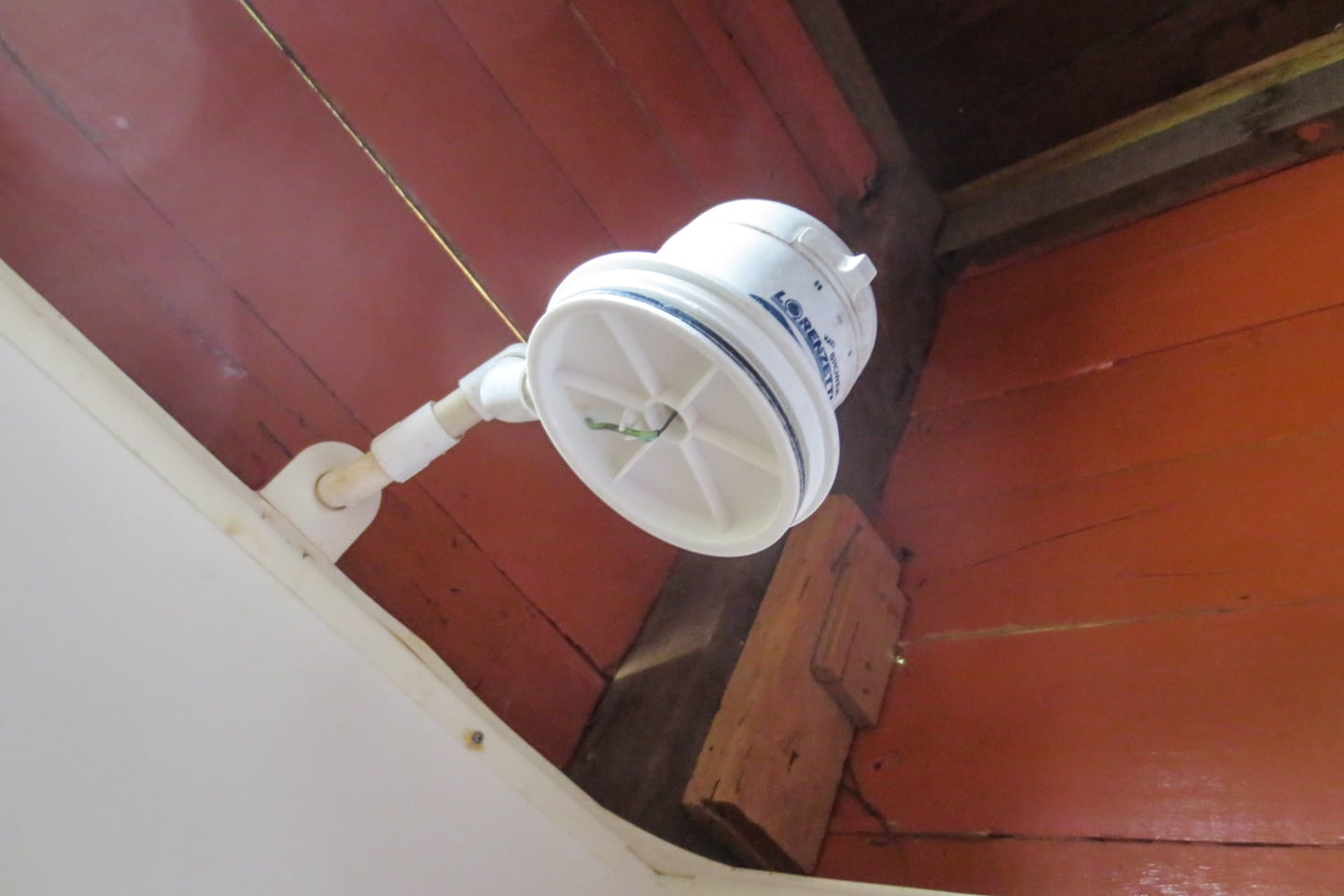
The bedroom was also very lovely — made lovelier by its bright pink paint! It also sported a large mosquito net (that was more for the critters running/flying around than mosquitos).

The bedroom did have some shelves, but no closet — however it did have this nifty contraption for hanging your clothes.

But we can’t talk about the Homestead without talking about our small resident colony of bats living in the eaves (with a nest of babies) (see picture below). Fortunately, they resided behind a thin mesh and came and went through an exterior route, but that didn’t mean we couldn’t see, hear or smell the bats — and they were LOUD, especially at night when it rained (which was most nights). The smell also started to get pretty hard to stomach as well, as their waste began collecting in the mesh. We had read that it could also be pretty harmful if inhaled over the long-term. We tried to clean it but it continued to accumulate, and by the time we left, we were pretty fed up with the bats.


The bats were “rat bats” like the ones above. They fly, but also scurry along and inside crevices using their wing arms, essentially giving them four legs — they’re both fun and unsettling to watch.
Parking started to be another pain in the butt — we found a vehicle not too long before moving and getting in and out of the space became somewhat of a hassle. Hosting guests would have also been quite interesting if it had ever gotten to that point. The yard was infested with fire ants which tore up my feet and ankles to the point where I couldn’t leave the house without socks or shoes, which I’ve rarely done in the tropics unless it’s a work day. All in all, the move was the right path for us, and we couldn’t be happier in our new place. Though, living in the Homestead was certainly an experience.
A lot of people tend to say things about experiences such as these that, if nothing else, they make you thankful for what you have. I think that might be true for a lot of folks, but I think over the years I’ve come to think of these arrangements more in terms of pros and cons rather than bungalow vs. chateau or good experience vs. “growing” experience — and most homes tend to have advantages and disadvantages no matter where you live.
Prior to Belize, the largest place Lori and I had known as a couple was a wonderful 800 sq. ft. unit in a row house built in 1900 in Washington, DC. Our other place together had been a 700 sq. foot one bedroom apartment built in the 1920s. So, space and other amenities — such as washer and dryer, dishwasher, spare room, parking space, etc. — have always been a premium. The Homestead had a lot of “luxuries” we hadn’t previously known, such as a yard, two porches, etc. The place we have now — forget about it — it feels palatial to us, yet it’s probably quite modest compared to a lot of homes in the States.
All of this to say that the Eldridge house, with a few adjustments such as sealing out the bats and a bit of spraying inside and out for pests, would have certainly been doable for our time here. We feel fortunate, however, that this opportunity with the new house came along, especially since it gives us some additional room for guests, less critters and a hassle-free place to park the car — all for a fifth of what we paid for our flat in DC!
Yet, the Homestead will always occupy a special place in our hearts and we’ll certainly think of it every time we pay way too much to stay on a rustic jungle bungalow in the future.




You are keeping us on tether hooks to see pictures of the new house! We are ready now !
Thanks for the photos and detailed insight about your Eldridgeville house. We look forward to more interior shots of your new place. We are so glad you have “upgraded” your abode.